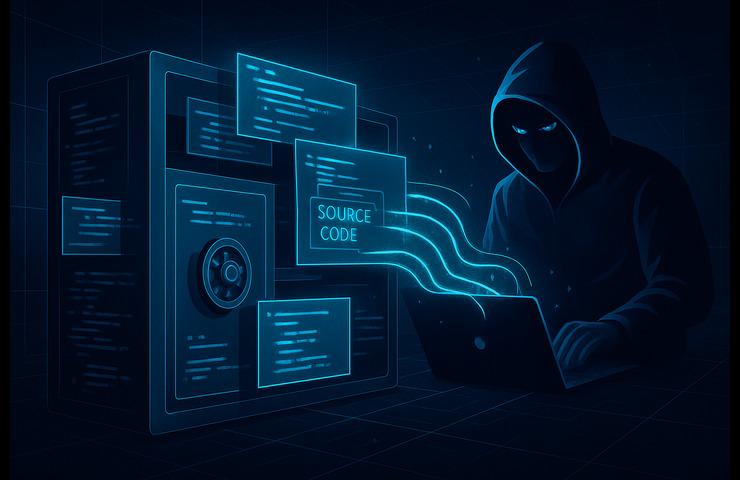
By Anand R, Cyber Researcher
It is on Tuesday morning. You’re in a deadline-oriented session while checking emails with a cup of coffee. A developer named Alex is doing the same somewhere. He clicks on what he thinks is a harmless link, perhaps related to a clever coding tool or software update. He asks himself, “How could anything go wrong with that one click?” Well, unfortunately for Alex, he just triggered a digital time bomb.
This isn’t a sci-fi movie, but it’s the untold story of how one click led to one of the most catastrophic breaches in a developer’s environment and nearly ruined one of the largest tech companies.
Alex didn’t know that the malware was a world class magician. His computer didn’t crash, and his computer screen wasn’t filled with aggressive ads. Instead, the malware was silently and stealthily collecting every login credential, password, and private data that was traversing his computer, and exporting it immediately to cybercriminals lurking in the depths, like a digital spy.
Alex worked diligently, launching his projects and coding along. Life went on. But his stolen credentials were about to make someone a lot of money, in a very dark part of the internet.
Here is “IntelBroker”, which is NOT his actual name. He is a living legend in cyber underbelly. IntelBroker is on a different level than an amateur hacker who breaks doors. IntelBroker has stolen keys and just waltzed through. His expertise? Using corporate espionage to heist stolen login credentials.
IntelBroker and his team had just gone through the stolen credentials they acquired on October 6, 2024. Then, they found it: Alex’s credentials for his Cisco developer environment. No alarms went off. No security systems alerted. To Cisco, it looked like Alex had simply logged on for another workday. But, while thieves were ransacking Cisco’s digital vault, Alex was almost certainly asleep.

Think of an “Ocean’s Eleven” heist, but rather than targeting a casino, you are targeting a developer environment that took source code, the most precious asset for a company. IntelBroker’s find was based on luck, was better than winning the lottery. Typical hackers are targeting credit cards. IntelBroker found something even better:
The criminal intent of IntelBroker’s patience, was he was copying file after file for months, transferring 4.5 terabytes of data from Cisco systems. It was like taking one gold bar at a time from Fort Knox.
IntelBroker decided to share an unwanted gift to the cybersecurity community on December 25, 2024. “This is 4.45 GB of the most private information from Cisco. Merry Christmas.” The post on an underground forum stated, “Enjoy it for free.”
With a proud flex of his trophy, IntelBroker shared a preview of the data and promised more. The Cisco security team was scrambling over the Christmas holiday trying to figure out how their systems were breached. The answer was less difficult but more terrifying than they thought.
This is a fundamental shift in how cyberattacks behave today, not just about Cisco. We often hear to worry about firewalls and servers, but the reality is that more and more attacks start from one compromised laptop and target your developers.
Imagine this: Your developers are using GitLab from home, logging into GitHub from coffee shops and being connected to airport Wi-Fi while committing code. Every login could become a point of entry that bypasses all of your expensive resources and security measures.
The good news is that the objectives associated with effective defense are simpler to comprehend than you might think. Here are some quick, important actions you can take to protect your company.
The first and best thing you can do is to require,
This type of threat requires permanent change, not just a temporary solution. These steps are a great start, but the best way forward is a full security plan. A security expert will be able to provide additional security recommendations and help.